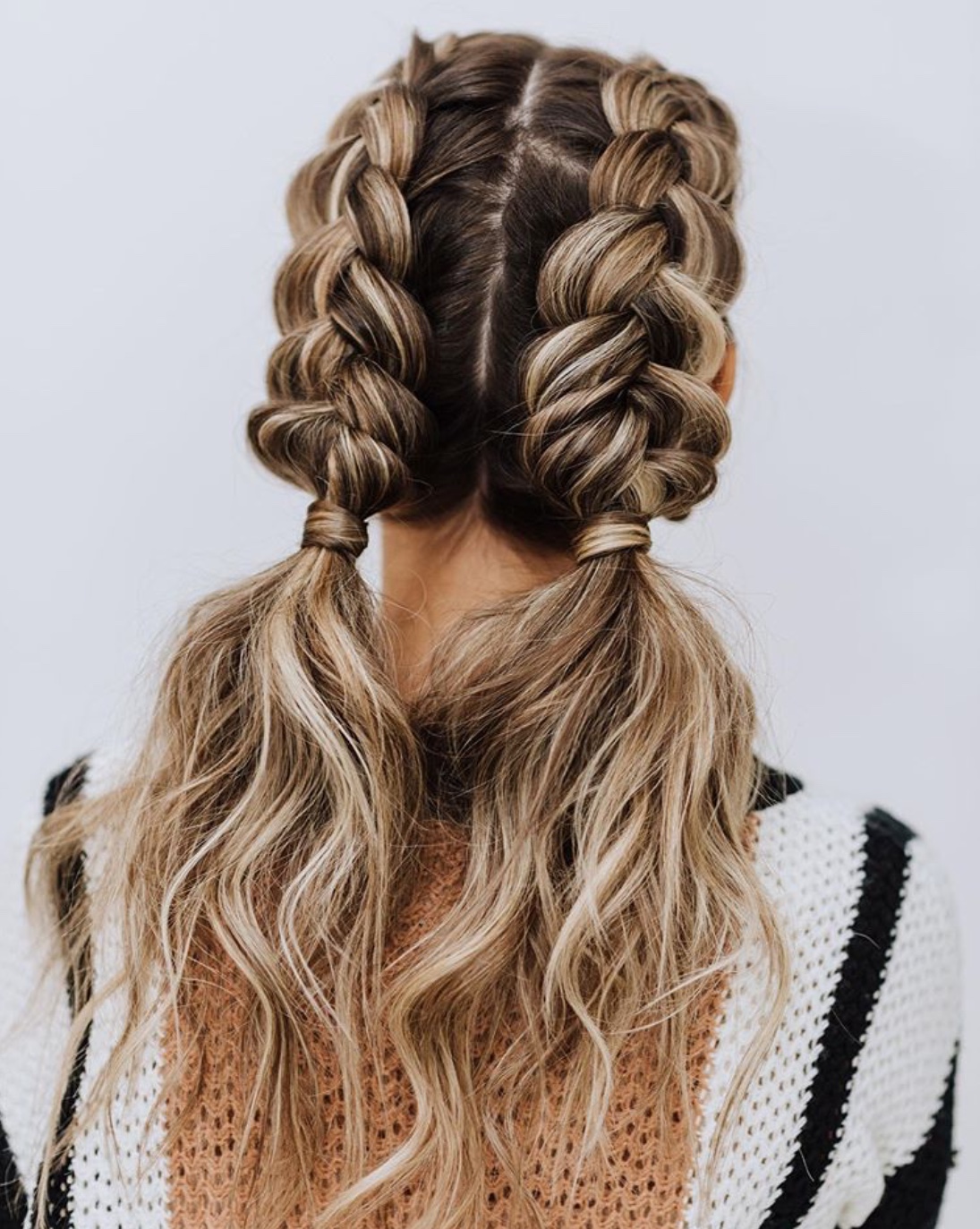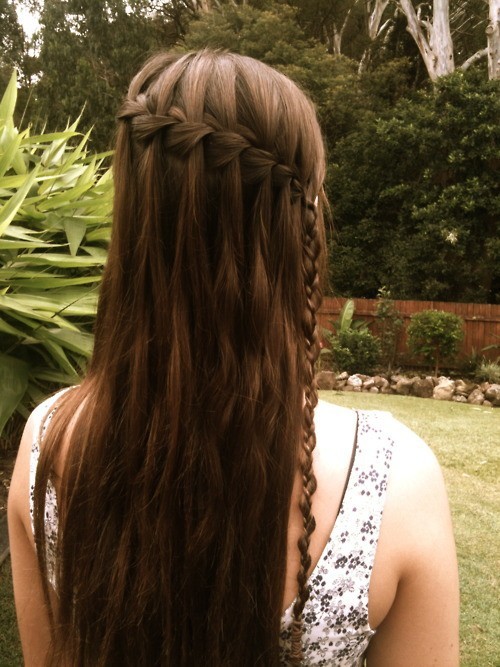Braiding long hair has become an art form that combines creativity, elegance, and functionality. Whether you're looking to create a simple everyday style or an intricate updo for a special occasion, braids offer endless possibilities. In this comprehensive guide, we will explore the techniques, tools, and tips necessary to master the art of braiding long hair.
From classic three-strand braids to more complex fishtail and waterfall styles, the versatility of braiding long hair makes it a favorite among hairstyling enthusiasts. This timeless technique not only enhances beauty but also protects hair from damage by keeping it secure and tangle-free.
In this article, we will delve into the world of braiding, providing step-by-step instructions, expert tips, and insights from professional hairstylists. Whether you're a beginner or an experienced braider, this guide will equip you with the knowledge to achieve stunning results every time.
Read also:The Vibe Vibrator Your Ultimate Guide To Enhanced Intimacy
Table of Contents
- Introduction to Braiding Long Hair
- Types of Braids for Long Hair
- Tools and Products Needed for Braiding
- Basic Braiding Techniques
- Advanced Braiding Techniques
- Styling Tips for Long Hair Braids
- Maintenance and Care of Braided Hair
- Frequently Asked Questions About Braiding Long Hair
- Benefits of Braiding Long Hair
- Conclusion
Introduction to Braiding Long Hair
Braiding is more than just a hairstyle; it's a cultural and historical practice that dates back thousands of years. Braiding long hair has been celebrated across various civilizations, symbolizing everything from social status to personal expression. Today, braids remain a popular choice due to their versatility and ability to suit all hair types.
With the rise of social media platforms, braiding techniques have become more accessible, allowing individuals to experiment with different styles. From casual to formal, braids can be customized to match any occasion or personal preference. This section will introduce you to the world of braiding and its significance in modern hairstyling.
Types of Braids for Long Hair
Classic Three-Strand Braid
The classic three-strand braid is the foundation of all braiding techniques. It involves dividing the hair into three equal sections and crossing them over one another in a specific pattern. This simple yet elegant style is perfect for everyday wear and can be customized by adding accessories such as ribbons or beads.
Fishtail Braid
The fishtail braid is a more intricate style that creates a textured, woven look. It involves taking small sections of hair from the outer edges and crossing them over the center. This technique results in a sleek, sophisticated appearance that is ideal for formal events.
Waterfall Braid
For those looking to add a touch of romance to their hairstyle, the waterfall braid is an excellent choice. This style incorporates drops of hair that cascade down the braid, creating a visually stunning effect. It requires a bit more practice but is worth the effort for its unique appearance.
Tools and Products Needed for Braiding
To achieve professional-looking braids, it's essential to have the right tools and products. Here's a list of essentials:
Read also:Low Profile Shoes Women The Ultimate Guide To Style And Comfort
- Hairbrush or comb for detangling
- Sectioning clips to hold hair in place
- Elastic bands for securing the braid
- Hair spray for added hold
- Texturizing spray for grip
Investing in quality tools and products will make the braiding process smoother and ensure long-lasting results.
Basic Braiding Techniques
Mastering the basics is crucial before moving on to more advanced styles. Here's a step-by-step guide to creating a classic three-strand braid:
- Start by brushing your hair to remove any tangles.
- Divide your hair into three equal sections.
- Cross the right section over the middle section.
- Then cross the left section over the new middle section.
- Repeat this process until you reach the ends of your hair.
- Secure the braid with an elastic band.
Practicing these steps regularly will help you develop the muscle memory needed for more complex braids.
Advanced Braiding Techniques
French Braid
The French braid is an elevated version of the classic three-strand braid. It involves incorporating additional sections of hair as you braid, resulting in a seamless, integrated look. This style is perfect for special occasions and can be worn both loose or pinned up for added sophistication.
Dutch Braid
The Dutch braid is similar to the French braid but creates a raised, inverted pattern. Instead of crossing the sections under the middle, you cross them over, resulting in a braid that appears to sit on top of the hair. This technique adds dimension and visual interest to any hairstyle.
Styling Tips for Long Hair Braids
Here are some expert tips to enhance your braiding experience:
- Use a texturizing spray to create grip and prevent slip.
- Pull apart sections of the braid gently to add volume and texture.
- Secure the ends of the braid with a clear elastic band for a seamless finish.
- Accessorize your braid with hairpins, flowers, or ribbons for added flair.
Experimenting with different techniques and accessories will allow you to personalize your braids and make them truly unique.
Maintenance and Care of Braided Hair
Proper maintenance is essential to keep braids looking fresh and intact. Here are some tips for caring for your braided hair:
- Avoid washing your hair too frequently, as it can loosen the braid.
- Use dry shampoo to refresh your hair between washes.
- Sleep with your hair tied loosely to prevent breakage.
- Gently detangle any knots that form with a wide-tooth comb.
Following these guidelines will help prolong the life of your braids and maintain their appearance.
Frequently Asked Questions About Braiding Long Hair
How long does it take to master braiding techniques?
The time it takes to master braiding techniques varies depending on individual skill levels. With regular practice, most people can achieve proficiency within a few weeks.
Can braids be worn by individuals with short hair?
Yes, certain braiding techniques can be adapted for shorter hair lengths. Micro braids and twisted styles are great options for those with shorter locks.
Are braids suitable for all hair types?
Braids are versatile and can be adapted to suit various hair types. However, it's important to choose the right technique and products to ensure the best results for your specific hair type.
Benefits of Braiding Long Hair
Braiding offers numerous benefits beyond aesthetic appeal. Here are some advantages:
- Protects hair from environmental damage and breakage.
- Reduces tangling and knot formation.
- Enhances hair strength and elasticity.
- Provides a practical solution for busy lifestyles.
Incorporating braids into your daily routine can improve the overall health and appearance of your hair.
Conclusion
Braiding long hair is an art form that combines functionality, beauty, and creativity. By mastering the techniques outlined in this guide, you can achieve stunning styles that suit any occasion. Remember to practice regularly, invest in quality tools and products, and take proper care of your braided hair to ensure long-lasting results.
We invite you to share your braiding experiences in the comments below and explore other articles on our website for more hairstyling inspiration. Happy braiding!


